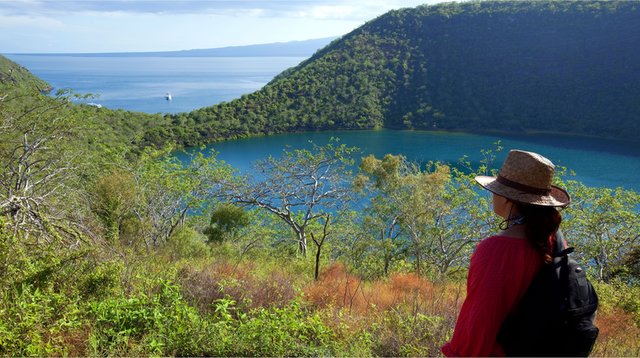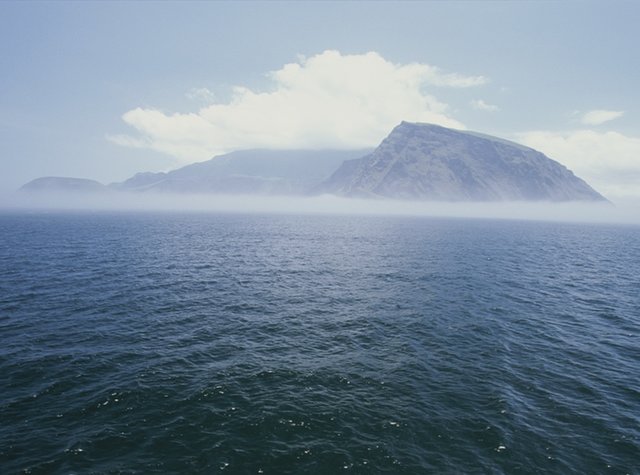OceaninMotion
Theislandsarefulloflifepartlybecauseof wheretheyformed.Theysitatacrossroadswhereseveraloceancurrents meet.
Someofthismovingwaterisdeepandcold.TheHumboldtcurrentislikethat.TheCromwellcurrentislikethat,too.Twoothersarewarmer.ThePanamacurrentisshallowandwide.TheSouthEquatorialcurrentmovesfromeastto west.
Allaremovedbywind.Thecurrentsalsomoveeach other.

ThewatersandcurrentsmovingaroundGalápagosIslandssupport life.

Cromwell current
PeruOceanic current
SouthEquatorial current
Humboldtcurrent
PACIFIC OCEAN
GALÁPAGOS
ISLANDS
ECUADOR
South
America
Panama current

Coldwaterwithmorenutrientsrisesuptoreplacewaterthatispushed away.
Surfacewindspushwaterawayfromthe land.
UPWELLING
Strongwindsanddeepcurrentscreateupwelling.Theoceanbecomesfullof food.
WindandWater
Onthesurface,windsblowoceanwateraway.Deeperwaterrisestoreplaceit.Thisiscalled upwelling.Upwellingstirsupwater.Itbringsfoodtothesurface.Manyanimalscometo eat.
Attimes,theHumboldtcurrentandthePanamacurrentmeet.Whenwarmandcoldwatercometogether,theycreateacoolmist.Cloudsform. Thentheislandsbecome hidden!
ThecoldCromwellcurrentcomesfromthewest.Itslamsintotheislands.Itupwells.Itswirlsaroundtheislands.Penguinsandfursealslikethecold water.

mistandfogaroundIsabela Island
TheSouthEquatorialcurrentbringswarmwater.Together,allofthesecurrentssupport life.
Theislandswerebornoffire.Theyarehelpedbywindandwater.Theyarefullof life.